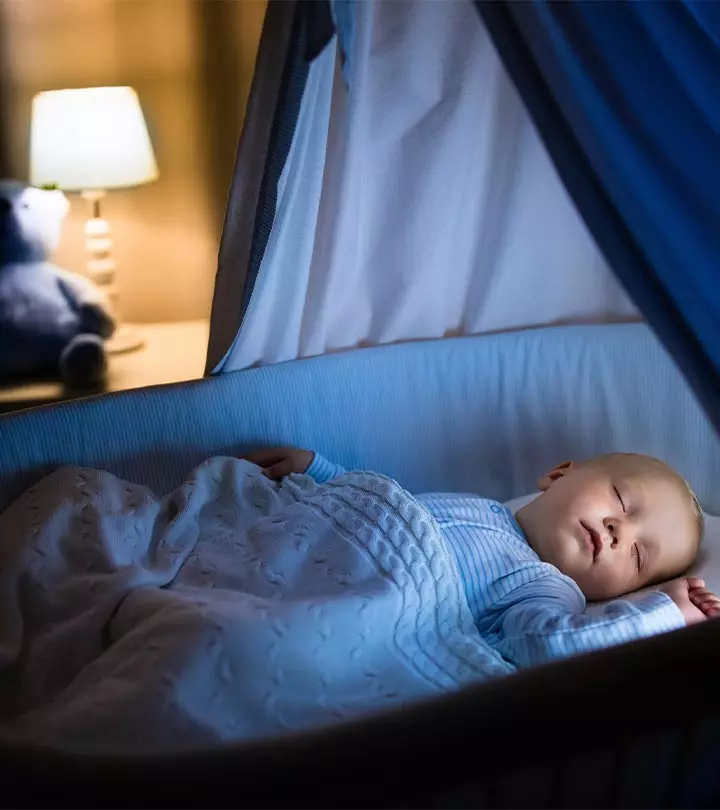
Image: iStock
Since newborns sleep a lot, you want to give your little one his dedicated space in his little bassinet. But just how safe are bassinets for babies? Given the numerous SIDS (sudden infant death syndrome) cases associated with bassinets, would you want to get one for your little one?
Well, bassinets are not harmful per se, but it is the precautions that most parents fail to take that make the product harmful.
The Children’s National Medical Center in Washington, D.C., carried out a study of data from 53 deaths involving bassinet use between 1990 and 2004. The average age of the infants who died in the bassinets was three months. The results of the study published in the Journal of Pediatrics, are as follows:
- Nine of the infants died due to a mechanical problem in the bassinet or due to wrong use of them.
- 37% of the babies were placed face-down in the bassinets.
- 85% of the deaths occurred due to suffocation.
- 74% of the bassinets had pillows, blankets or plastic bags in them.
- 9% of the deaths were due to SIDS.
You might ask us whether cribs are any better than bassinets. Well, each has its pros and cons.
Bassinets vs. Crib
Bassinets occupy lesser space, they are smaller and portable, and hence suit smaller homes. Their sides are lower, so you don’t have to lean over the railings like those of a crib to place the baby. This is especially good if you have had a Cesarean section. However, bassinets are useful only through the first few months of your baby’s life.
A crib, despite the space it occupies, higher sides, and less portability, is durable and can be converted into beds during the toddler stage. The crib can be a one-time investment. Although a crib won’t have a hood like a bassinet, you could use a mesh. Though more expensive than a bassinet, you could rely on the longevity of a crib.
Regardless of whether you use a bassinet or a crib, your baby is safe as long as you stick to the guidelines as laid down by the American Academy of Pediatrics and emphasized by researchers:
- Put your babies to sleep on their backs.
- Ensure that there are no stuffed animals, soft bedding or loose pillows in your baby’s sleeping area.
- The bassinet must be in good shape, and the slats must be in place too.
- Ensure that there is no plastic sheet in the bassinet as it could lead to suffocation.
- It might be a good idea to keep the crib or the bassinet in your room and let the baby sleep in it than in your bed. Sharing a bed with an infant has been one of the causes of SIDS.
The CPSC’s (US Consumer Product Safety Commission) advice for bassinet use:
- The bassinet must have a sturdy base.
- Bassinets must have smooth surfaces.
- Mattresses must fit tightly and be firm in the bassinet.
- There should be no hardware sticking out of the bassinets.
Ultimately, what make a difference are the safety measures that you take. Do not just leave the baby in the bassinet and go around doing your chores. Keep an eye on him. Make sure the bassinet is not crowded with toys and other stuff. With a little caution, your baby is safe in its tiny sleeping space.












